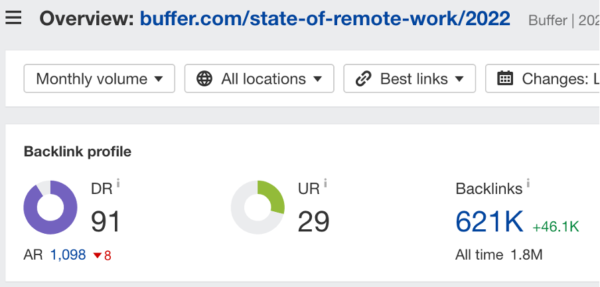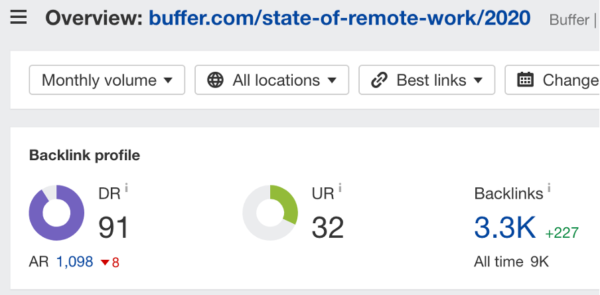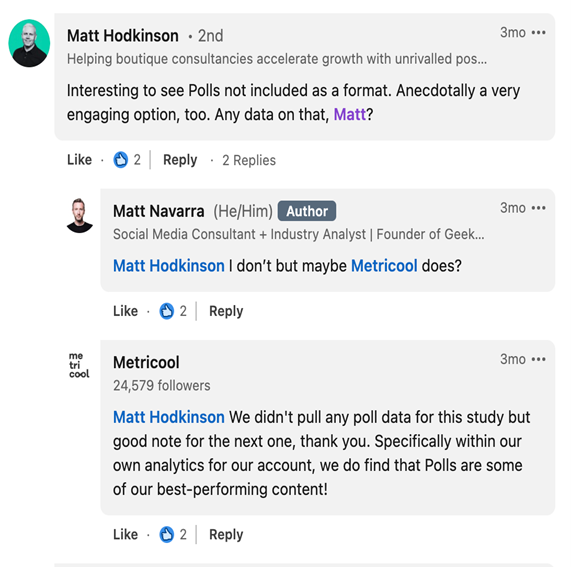Brands generate original research to grow their recognition as thought leaders in their industries.
But the buzz won’t materialize if the marketing team doesn’t promote the research. Whether you have a massive budget or not, consider these five strategies to ensure that your organization’s research maximizes its direct and indirect benefits.
You can start with these five ideas based on my and others’ experiences:
1. Pick topics that promote themselves
Buffer is a social media management SaaS company. Between 2018 and 2023, it published the State of Remote Work. Instead of compiling another “state of social” report like its competitors — an approach tied directly to the services they offer — Buffer took a creative topical twist by addressing the growing trend of remote work, even though it’s not directly related to its core offerings.
Buffer recognized that research on remote work would attract wider interest than another report on social media for marketers. The strategy worked, as top media outlets such as Forbes, Harvard Business Review, TechCrunch, and Fast Company regularly reference and link to Buffer’s State of Remote Work reports.
That media coverage netted Buffer helpful backlinks, which indicate to search engines that the Buffer research is worthy of attention in results rankings. However, in 2022, the State of Remote Work report netted staggeringly more attention than it did in 2020.
As these Ahrefs’ reports show, the 2022 study earned over 1.8 million backlinks during its lifetime (621,000 of which are still live), while the 2020 study received 9,000 backlinks (more than 3,000 are still live).


What explains the tremendous difference? Remote work was a trending topic in 2022 because, by then, everybody had access to COVID-19 vaccinations. Employees were thinking about voluntarily returning to the office or were being forced back by their employers. Media looked for data to cite on this increasingly important topic and showered Buffer’s fresh study with press mentions and backlinks.
2. Publish the report on a more prominent website
When I created the first edition of the How To Build a Credible Blog report, I planned to publish it on my website (socialmarketingwriting.com) and do a ton of outreach.
Then, an idea hit me: “What if I published the study on another site before mine?” I had seen other companies do this and earn press mentions.
So, I asked Jeff Bullas, who has a big social following, to publish my report on his site, which receives a ton of traffic and for which I had previously written. I told him I would debut the study on his site, and he said yes.
The idea paid off. People who visited Jeff’s site, which gets a healthy amount of organic search and direct traffic, discovered my work. Jeff also shared the link to the blog post on social networks and tagged my handle. This got more eyeballs to gravitate toward the study and boosted its credibility.
I republished the study on my site one week later and used that link for other sites that mentioned my research.
TIP: Transform some of your study’s results into an infographic and promote it to journalists so their sites need to embed only one image.
3. Email study participants
An easy way to quickly get some views is to email the published research link to everyone who participated. But to do this, you must think ahead.
I like to add a line at the end of the survey that says, “To be among the first people to see the report, make sure you add your email address.” A lot of people submitted their details. Just make sure you stick to your promise and contact them before sharing it with anyone else.
TIP: You can also use the notification email as a request for them to help promote it. Share descriptive text and an image or two and encourage them to let their social followers know.
4. Partner with influencers
I came across this LinkedIn post from Matt Navarra, author of the Geekout newsletter and social media consultant with over 250,000 followers on social, including over 64,000 on LinkedIn.
He previewed Metricool’s study on LinkedIn in the post’s text and published a 10-image carousel with findings, ending both with a call to check out the full report. I ended up providing my contact information to Metricool and downloading the report.
TIP: Support the influencer partner after the promotion is published. When someone commented about the lack of polling as an option in the research, Matt replied and tagged Metricool, which followed up by thanking the commenter for the suggestion and noting it may add it in the next survey.

Of course, for this strategy to work well, you should team up with influencers who have access to the audience you want to reach.
5. Tease the content in blog post and ads
Even when you want to generate leads and require registration to access the report, you can use some of the content to attract the audience.
Publish a blog article with some key results that would entice the viewer to hand over their contact information to read the rest of the research. Include a sign-up box on that page or at least provide a link to the research sign-up landing page.
You also can run ads that direct people to the substantive blog article. You’ll likely find the cost per click to be less than ads that direct readers to a landing page where they only get an option to sign up for something.
TIP: The higher traffic to and time spent on the blog article also will likely net more positive results from the social media and search engine algorithms.
Make the most of your original research
Original research is one of the best kinds of content to create. It’s unique. However, your target audience can’t marvel at its one-of-a-kindness if they don’t know about it. So, plan a promotion strategy and amplify the study as much as you can through survey participants, well-known websites, media, influencers, and more.
HANDPICKED RELATED CONTENT:
Cover image by Joseph Kalinowski/Content Marketing Institute
